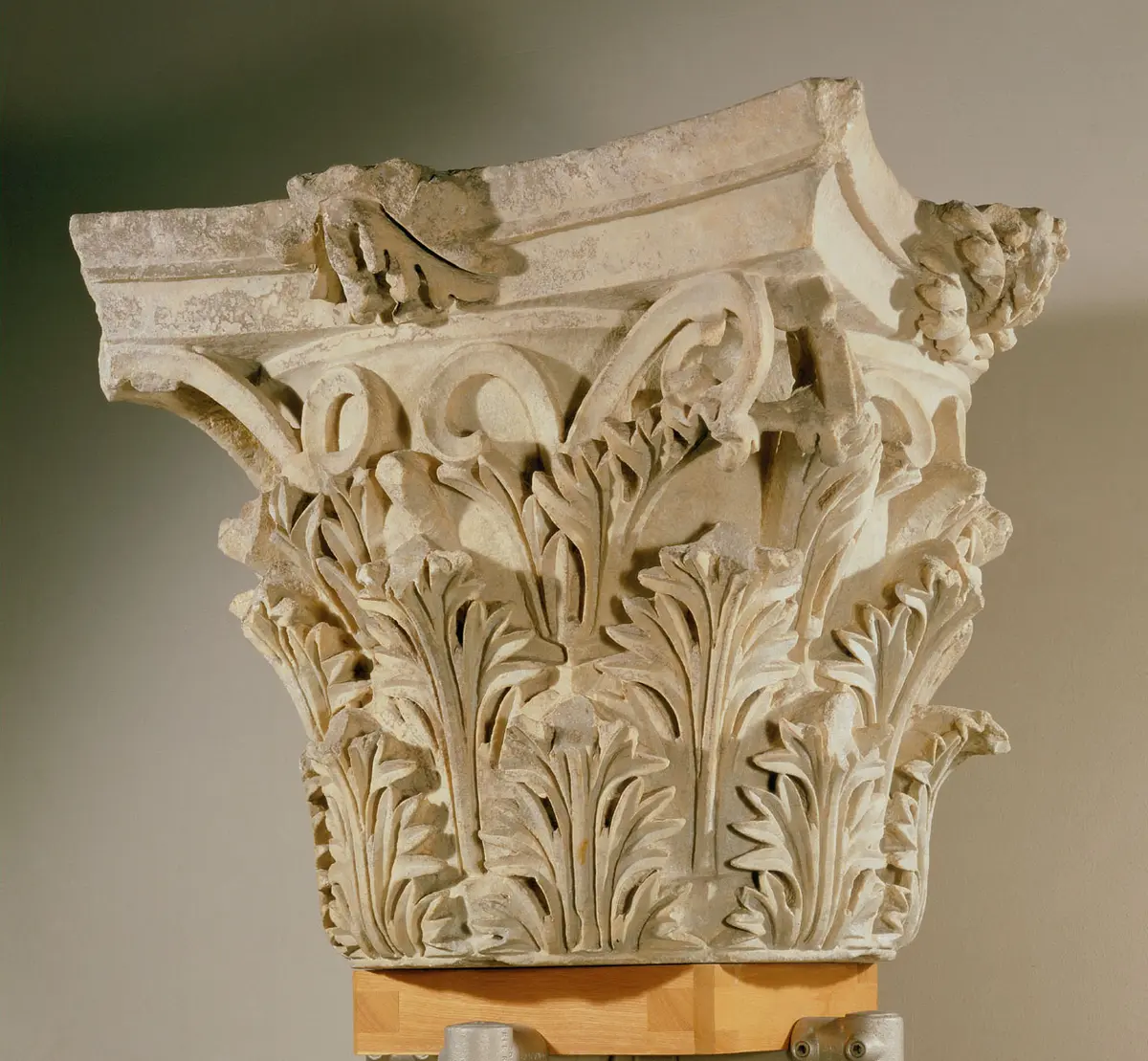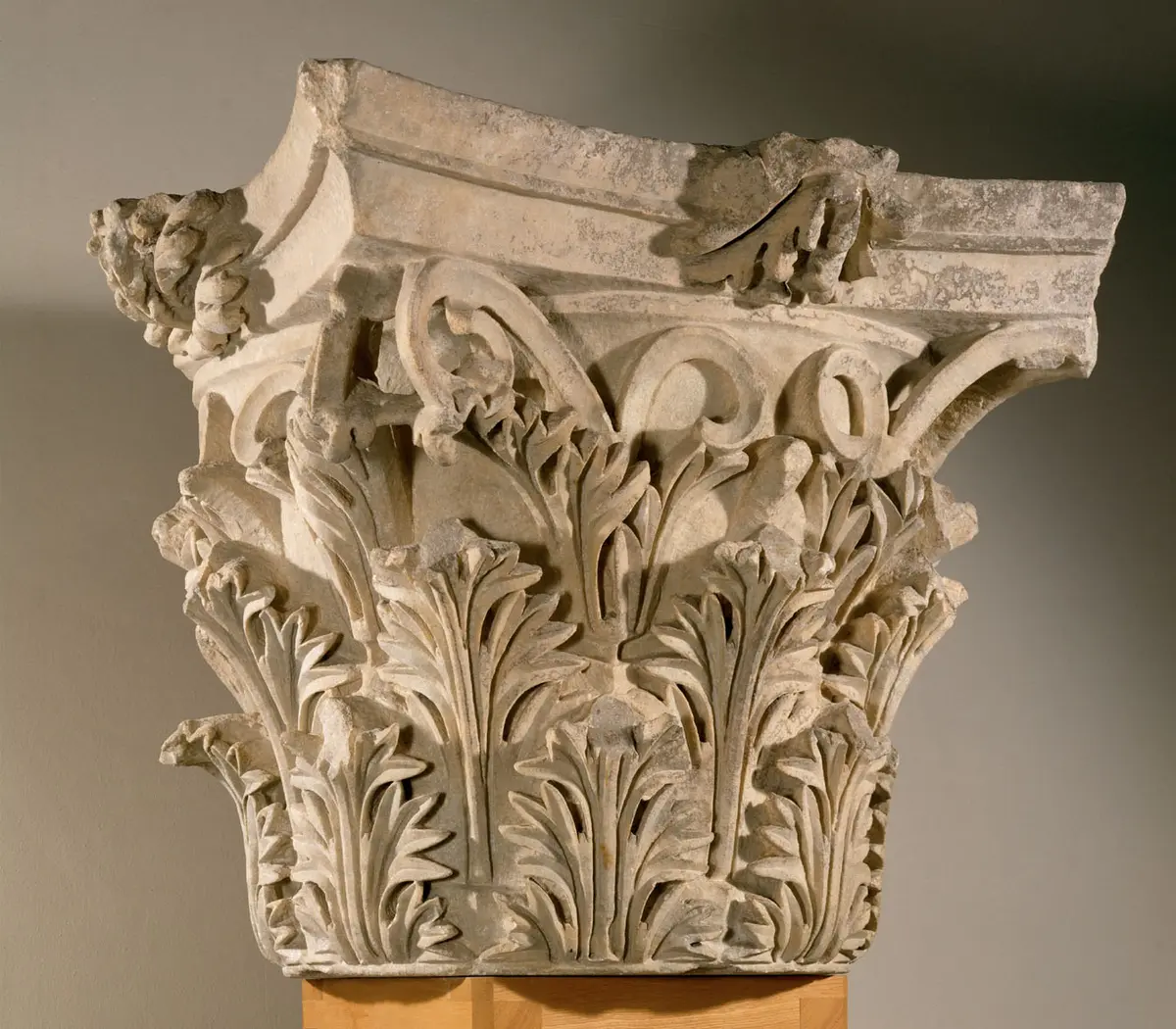Korinthisches Kapitell
Das Korinthische Kapitell ist eine Leitform römischer Architektur. Den Körper des Kapitells (Kalathos/Korb) verzieren zwei Reihen von jeweils acht Blättern (Kranzblatt und Hochblatt), die aufgrund ihrer Ähnlichkeit mit der im Mittelmeerraum häufigen Pflanze als Akanthusblätter bezeichnet werden. Darüber wachsen Voluten und „Helices“ auf, die den Abakus tragen, eine bekrönende Deckplatte, auf der der Architrav zu liegen kommt.Mit Kapitellen dieses in Ephesos häufigen Typs wurden zahlreiche Bauwerke ausgestattet, unter anderem die Palästra des Hafengymnasiums.
Title:
Korinthisches Kapitell
Time:
Ende 1. Jh. n. Chr.
Culture:
Römisch
:
Ephesos Hafengymnasium Marmorsaal (Selçuk, Kleinasien, Türkei)
Material/technology:
Marmor
Dimensions:
H. 68 cm, Dm. 50 cm
Copyright:
Kunsthistorisches Museum Wien, Antikensammlung
Invs.:
Antikensammlung, I 840
Provenance:
Sultan, Abdul, Hamid, II.; Österreichische Ausgrabungen in Ephesos; Geschenk an Kaiser Franz Joseph; 1911 nachträglich inventarisiert

